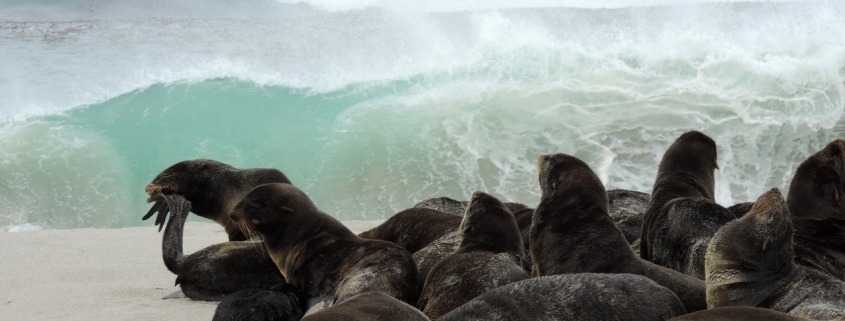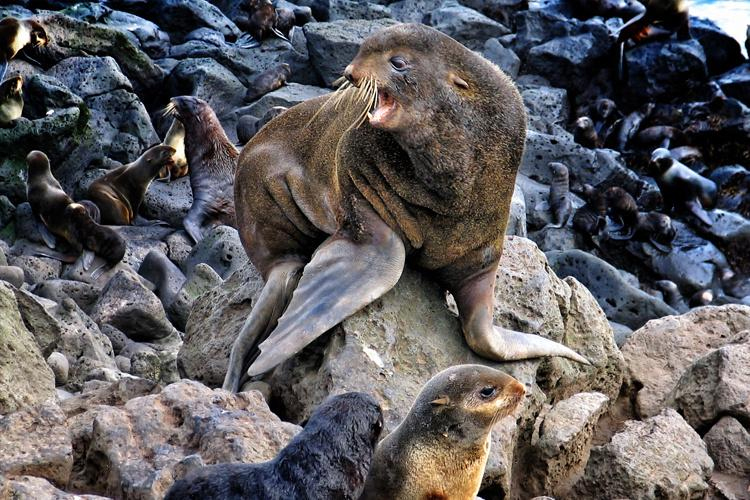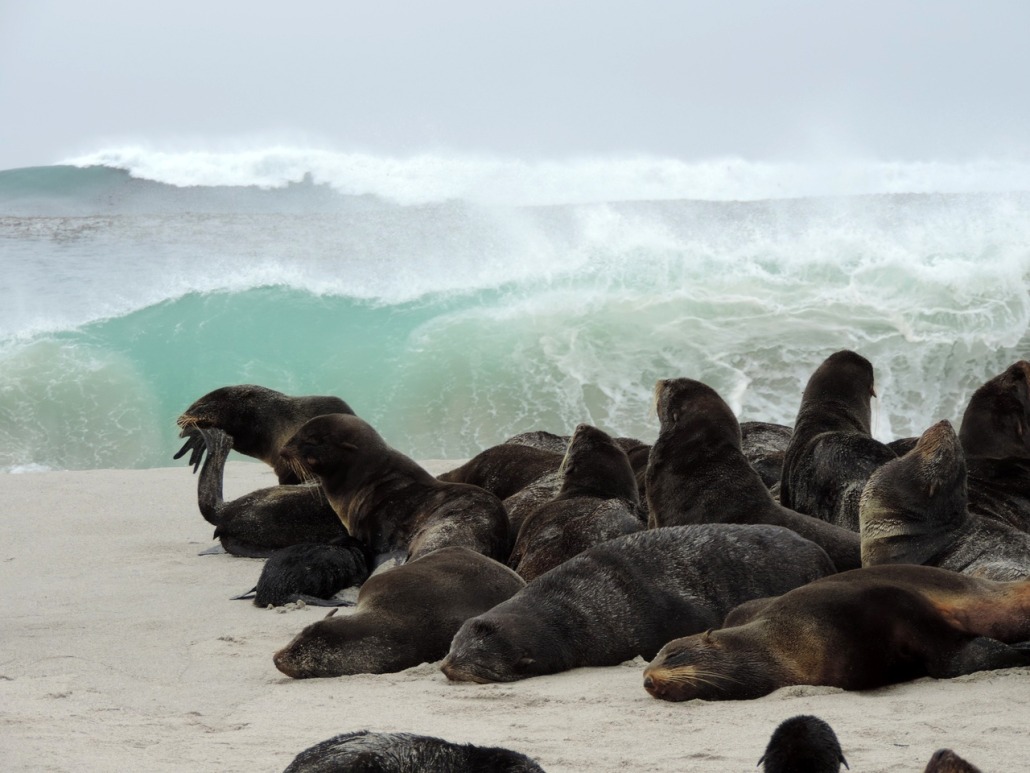Common name: Northern Fur Seal
Author: Charlotte Lohner
Photos: Thank you to NOAA Fisheries for the use of their photos.
Scientific name: Callorhinus ursinus
Size range: Females weigh up to 140 pounds, and males weigh 600 pounds. The length of females is 5 feet, and the length of males is 7 feet.
Identifying Features (size, things you can see that help identify them):
Northern Fur Seals’ fur is very long, and their ears are very prominent. They have a stocky body, small head, and very thick fur. Males are dark brown or black. The females are dark gray or brown on their backs, and light gray, silver, or cream on the bottom of their necks, chests and stomachs.
Habitat Northern Fur Seals live in the open ocean. However, they also live on beaches on islands in the north Pacific and the Bering Sea when they are reproducing, resting, and molting. When they are breeding, these seals live together. They are found in Japan, along the west coast of North America to the United States and Mexican border. The seals can be found in these places in almost all the months of the year. In the Canadian west coast, females and almost fully grown males are usually found in the winter months. On occasion, they come inshore in British Columbia. They even come to Vancouver Island. So if you’re lucky, you might see a few on the south of Vancouver Island.
Food (Prey) Northern Fur Seals eat fish such as walleye pollock, different species of squid, and herring. They are foragers. The seals’ prey change seasonally throughout the year. Differences in their diet also can occur depending on their habitat.
Predators Sharks and orcas are known to eat Northern Fur Seals. Stellar sea lions prey upon young seals. Foxes are also known to eat them. The seals have strong front flippers that enable the seals to swim away from predators quickly.
Life Cycle Male Northern Fur Seals live up to 18 years, whereas the females live up to 27 years. Bulls (male seals) start returning to the mating islands to defend their territories. Females start returning to the islands in late June. Females aren’t picky about choosing males, but they are particular about the mating area. Bulls are 10 years old when they have their first pup. Females are 5 or 6 when they have their first baby. Females suckle the new-born young for 5 to 6 days, and then forage for fish and squid for their babies for 3 to 9 days. Pups leave the breeding sites before their mothers around 4 months of age. Baby seals are black until they are 3 weeks old, when they molt and become silvery gray.
Fun Facts Northern Fur Seals are members of the “eared seal” family (Otariidae family). They were historically hunted for their long, soft fur until 1984, when commercial hunting of the seals was ended by the United States. The seals have good eyesight and sharp hearing. The population of these seals is 1.1 million globally today, but is declining.
References
NOAA Fisheries. (2019). Northern Fur Seal. NOAA. Retrieved November 19, 2023, from https://www.fisheries.noaa.gov/species/northern-fur-seal
Fur Seals | National Geographic. (2010, April 11). Animals. Retrieved November 19, 2023, from https://www.nationalgeographic.com/animals/mammals/facts/fur-seals#:~:text=Fur%20seals%20have%20sharp%20eyesight
OctoberCMS. (n.d.). Northern Fur Seal | The Marine Mammal Center. Www.marinemammalcenter.org. Retrieved November 19, 2023, from https://www.marinemammalcenter.org/animal-care/learn-about-marine-mammals/pinnipeds/northern-fur-seal#:~:text=Out%20in%20the%20open%20ocean







Leave a Reply
Want to join the discussion?Feel free to contribute!